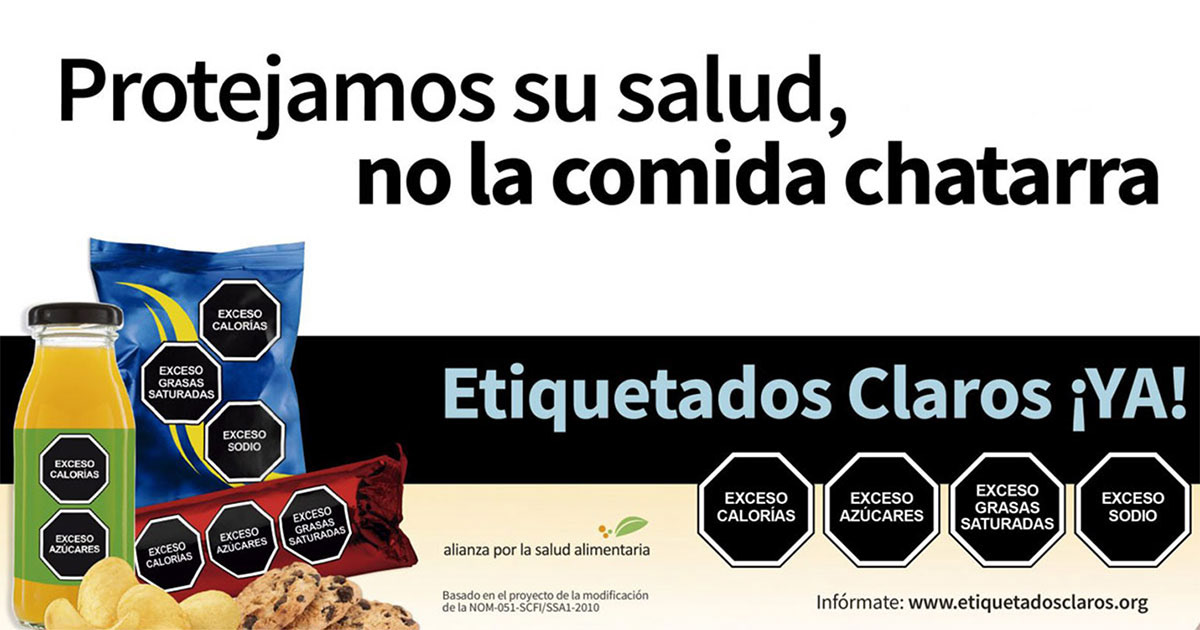The Chilean Food Act of 2016 was the first mandatory nationwide front-of-package (FOP) labeling regulation to be implemented. Obesity rates have tripled worldwide, and approximately 40% of the adult population today is either obese or overweight. Consequently, the Food Act aimed to prevent and reduce growing public health issues such as obesity. The act mandates labels be placed on the front of packages to indicate to consumers when a product is unhealthy. A product is considered unhealthy if targeted nutrients—sugar, calories, sodium, and fat—exceed specific concentration thresholds.
Barahona et. al (2021) provide effects of this policy that are best observed by analyzing the demand and supply sides. On the supply side, firms reformulated their products to fall just below the threshold to avoid placing labels on their products. Suppliers reduced sugar and calorie concentrations by 11.5% and 2.8%, respectively. It is estimated that the cost of this reformulation beneath the thresholds led to a 5.5% increase in prices for reformulated or unlabeled products relative to the original or labeled products. On the demand side, consumers reduced their overall sugar and caloric intake by 9% and 6%, respectively. This change is explained by a combination of product reformulation and consumers substituting within categories where the quantity of labeled products sold relative to unlabeled ones fell by an average of 26.4%. As demonstrated by consumer surveys, this substitution occurs when consumers use FOP labels to correct their prior mistaken beliefs that a certain product was healthy when, in fact, it was not.
The authors utilize evidence from Walmart's scanner data, covering all transactions between May 2015 and March 2018 for over 6,000 different items. Walmart is Chile's largest food retailer, accounting for 40% of the supermarket market. The data collection method and source seem to provide a robust sample of the Chilean food market. However, to strengthen their argument, the authors could have shown that other supermarkets, which comprise the remaining 60% of the market, also sell similar packaged foods. Furthermore, they can ensure that consumer intake incorporates a significant amount of packaged foods from supermarkets to avoid criticism that certain populations primarily purchase unpackaged food and artisanal foods not subject to this policy.
The evidence of a decrease in pre- and post-act sugar and calorie intake is compelling; however, it would be beneficial to provide context to show whether such a decrease is meaningful. One way to do this would be to analyze the long-term effects on population weight and obesity levels and observe any correlated decreases. Furthermore, it is commendable that this paper acknowledges the benefits of other tools, such as a sugar tax, which can be effective in certain contexts.
Another way to assess policy success and meaning could involve measuring government health expenditure over time. Perhaps a decrease in health spending correlates to a reduction in illness. Lastly, the authors analyze the concentration of added sugars but do not examine alternative sweeteners like stevia or sugar alcohols. The increased prevalence of these alternative sweeteners, many of which are not subject to the threshold, may negate the benefits the government intended for two main reasons. First, there is a lack of transparency in labeling these sweeteners. Second, sweeteners may have unintended or negative health outcomes. Thus, future research should analyze the incorporation of these ingredients into reformulated products and their health outcomes to ensure that the demand and supply side effects are accurate and fulfill the purpose of the act.
—
Ishil Puri
